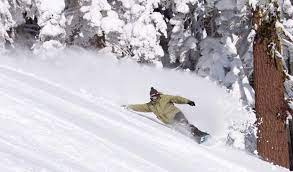Although snowboarding can be sometimes thought of as a “relatively new” sport in comparison to alpine skiing, the number of snowboarders in the USA has been rising steadily and catching up to skiers. During the 2012/2013 season, there were an estimated 7.3 million snowboarders compared to 8.2 million skiers at US resorts.1 However, even though the number of total snowboarders is behind skiers, the rate of injury in snowboarders is two to three times higher than in skiers and has been reported to be between 1.16 and 4.2 injuries per 1,000 snowboard days.1
So, what types of injuries are snowboarders sustaining? A recent study brings up that, in regard to the types of injuries that can occur while snowboarding, there seems to be a difference depending on your skill level (e.g., beginner versus elite snowboarders).1 The study reports that beginner snowboarders are more likely to injure their upper extremities, especially their wrists and heads, while more experienced snowboarders are susceptible to lower extremity injuries that are typically more severe in nature.1 One of the biggest differences between these two groups is the mechanism of injury: beginner snowboarders are more likely to be injured during an isolated fall while elite snowboarders tend to sustain injuries while landing from high amplitude jumps.1 With these higher-impact landings, the joints and bones in your legs have to absorb more of the force, which is why it makes sense that elite snowboarders injure their ankles and knees more often than beginner snowboarders.1 The study also found that goofy stance riders need not fret, as there was no difference in regular versus goofy stance in terms of injury rates.1 However, it is interesting to note that, regardless of which leg you have forward, the leading leg is more likely to be injured if you happen to sustain a leg injury.1 Why that is the case is still yet to be determined.
Now, knowing that snowboarders are susceptible to all kinds of injuries which vary somewhat according to skill level, the big question is what to do to avoid injuring yourself while riding? One of the most obvious answers, especially for beginner athletes, is to make sure you wear a helmet and wrist guards when you get out on the hill.1,2 According to a recent systematic review, the other important factors besides using safety equipment in snowboarding injury prevention include education and knowledge, awareness and behavior associated with risk, experience, and third-party involvement (e.g., the ski patrollers on the hill taking initiatives to educate riders on safe riding practices).2 This review made a special point to acknowledge the fact that there is a paucity in research that looks at the effectiveness of specific exercise and conditioning in order to prevent snowboarding injuries even though it is reasonable to assume that improved physical fitness and strength can help you be more prepared before you hit the slopes.2
As physical therapists, we thrive on being able to identify exercises and training routines that will help our patients feel more confident as they head out into their favorite recreational activities, including snowboarding. Although there is no specific research pertaining to snowboarding injury prevention and exercise, we can use our experience to come up with an appropriate training and conditioning program based on each person’s individual needs and injury history. Here at Rakita Tomsic Physical Therapy, we would love to see you as this season gets underway so that we can help you come up with the best individualized program with the end goal of being safe and having fun on the hill this winter.
- Wijdicks CA, Rosenbach BS, Flanagan TR, Bower GE, Newman KE, Clanton TO, Engebretsen L, LaPrade RF, Hackett TR. Injuries in elite and recreational snowboarders. Br J Sports Med. 2014;48:11-17.
- Hebert-Losier K, Holmberg H-C. What are the Exercise-Based Injury Prevention Recommendations for Recreational Alpine Skiing and Snowboarding: A Systematic Review. Sports Med. 2013;43:355-366.

